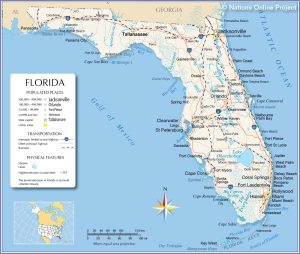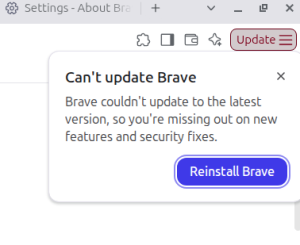The Pros and Cons of Using Taxes Versus Tollways to Fund Road Maintenance
When it comes to funding road maintenance, policymakers face a critical decision between two primary approaches: using taxes or implementing tollways. Both methods have their advantages and disadvantages, and their impact varies based on geographical, economic, and social factors. This blog post will delve into the pros and cons of each method, providing a comprehensive analysis to help understand the implications of each funding strategy. Additionally, we will incorporate the latest statistics and data, including insights into how much out-of-state visitors to Florida typically spend on tolls during their stay.
Taxes as a Means of Funding Road Maintenance
Pros of Using Taxes
- Broad Revenue Base: Taxes, such as fuel taxes, sales taxes, and income taxes, draw from a broad base of contributors. This means that everyone who benefits from the roads, directly or indirectly, contributes to their maintenance. This widespread contribution can generate substantial revenue.
- Equitable Distribution: By spreading the cost across all taxpayers, the financial burden does not fall disproportionately on specific groups. This can be particularly beneficial in ensuring that low-income individuals are not unduly burdened by the costs of road maintenance.
- Simplicity and Convenience: Tax-based funding is relatively straightforward to implement and manage. Existing tax collection systems can be utilized, reducing administrative overhead. Citizens are accustomed to paying taxes, making it a familiar and predictable method of funding.
- Encourages Comprehensive Infrastructure Planning: Tax revenue can be allocated based on broader infrastructure needs and priorities. This holistic approach allows for more comprehensive and long-term planning of transportation networks, including roads, bridges, and public transit systems.
- Consistency and Stability: Taxes provide a steady and predictable stream of revenue, ensuring that road maintenance can be planned and executed consistently over time. This stability is crucial for long-term infrastructure projects that require sustained funding.
Cons of Using Taxes
- Political Challenges: Raising taxes or reallocating existing tax revenues can be politically challenging. Tax increases are often unpopular with voters, making it difficult for policymakers to secure the necessary support for adequate road maintenance funding.
- Lack of Direct User-Pay Principle: Unlike tollways, tax-based funding does not directly correlate with road usage. This can lead to inefficiencies, as those who use the roads more frequently do not necessarily contribute more to their maintenance.
- Revenue Limitations: Tax revenues are subject to economic fluctuations. During economic downturns, tax revenues may decrease, leading to potential shortfalls in funding for road maintenance. This can result in deferred maintenance and deteriorating infrastructure.
- Allocation Challenges: As discussed in the above video, ensuring that tax revenues are appropriately allocated to road maintenance can be challenging. Taxes on some products like the gasoline you put in your car are not necessarily used to fund necessary road maintenance. Competing priorities and budget constraints can lead to underfunding of infrastructure projects, affecting the quality and safety of roads.
- Administrative Costs: While taxes are generally straightforward to collect, there are still administrative costs associated with managing and distributing the funds. These costs can reduce the overall efficiency of tax-based funding for road maintenance.
Tollways as a Means of Funding Road Maintenance
Pros of Using Tollways
- User-Pay Principle: Tollways operate on the user-pay principle, meaning that those who use the roads directly contribute to their maintenance. This creates a direct link between road usage and funding, ensuring that frequent users pay their fair share.
- Revenue Generation: Tollways can generate substantial revenue, especially in high-traffic areas. This revenue can be used not only for road maintenance but also for other transportation infrastructure projects, enhancing overall mobility.
- Efficient Allocation of Resources: By charging tolls, road authorities can allocate resources more efficiently. High-traffic roads that require more maintenance receive more funding, ensuring that critical infrastructure remains in good condition.
- Encourages Alternative Transportation: Tollways can incentivize the use of alternative transportation modes, such as public transit, carpooling, and cycling. By imposing a cost on road usage, tolls can help reduce traffic congestion and environmental impact.
- Technological Advancements: Modern toll collection systems, such as electronic tolling and automated payment methods, have made tollways more convenient for users. These technologies reduce congestion at toll booths and improve the overall user experience.
Cons of Using Tollways
- Economic Inequality: Tollways can disproportionately impact low-income individuals who may not have alternative transportation options. The cost of tolls can add up, making it more expensive for these individuals to commute and travel.
- Administrative and Operational Costs: Establishing and maintaining toll collection systems can be expensive. The infrastructure required for toll booths, electronic tolling, and enforcement adds to the overall cost of road maintenance.
- Potential for Traffic Diversion: Tollways can lead to traffic diversion, where drivers seek alternative routes to avoid tolls. This can result in increased congestion on secondary roads, which may not be designed to handle high traffic volumes.
- Privacy Concerns: Electronic toll collection systems often involve tracking vehicles and their movements. This raises privacy concerns for some individuals who may be uncomfortable with the collection and storage of their travel data.
- Visitor Impact: Out-of-state visitors, such as tourists and business travelers, are required to pay tolls, which can add to their travel expenses. This can affect tourism and the overall attractiveness of a region as a destination.
- Complicated system for users: Depending on distance traveled, toll road users may need multiple “tollway passes” like SunPass or EZPass to save on tolls and avoid administrative fees.
Case Study: Florida’s Tollway System
Florida provides a compelling case study for examining the impact of tollways on road funding. The state has an extensive network of toll roads, including the Florida Turnpike and several other major expressways. These tollways play a significant role in funding the state’s road maintenance and infrastructure projects.
Revenue Generation
According to the Florida Department of Transportation (FDOT), toll revenues are a crucial component of the state’s transportation funding. In the fiscal year 2022, toll revenues in Florida amounted to approximately $1.4 billion. This revenue is used not only for maintaining existing toll roads but also for expanding and improving the state’s transportation network.
Impact on Out-of-State Visitors
Out-of-state visitors to Florida contribute significantly to the state’s toll revenues. A study by the FDOT found that out-of-state drivers accounted for about 20% of all toll transactions in the state. On average, out-of-state visitors spend approximately $30 on tolls during their stay in Florida. This contribution helps offset the costs of road maintenance and infrastructure improvements, benefiting both residents and visitors.
Technological Advancements
Florida has been at the forefront of implementing advanced toll collection technologies. The state’s SunPass system, an electronic toll collection system, allows for seamless and efficient toll payments. SunPass users benefit from reduced toll rates and faster travel times, as they can use dedicated lanes that bypass traditional toll booths.
Comparative Analysis: Taxes vs. Tollways
To provide a comprehensive understanding of the pros and cons of using taxes versus tollways for road maintenance funding, it is essential to compare the two approaches across several key dimensions.
Revenue Generation and Stability
Taxes provide a broad and stable revenue base, ensuring consistent funding for road maintenance. This stability is crucial for long-term infrastructure planning and execution. However, tollways can generate substantial revenue in high-traffic areas, potentially exceeding the amounts collected through taxes. The user-pay principle of tollways ensures that those who use the roads most frequently contribute more to their upkeep.
Equity and Fairness
Taxes are generally more equitable, as they spread the cost of road maintenance across all taxpayers. This ensures that low-income individuals are not unduly burdened. In contrast, tollways can disproportionately impact low-income drivers who may have limited transportation options. The economic burden of tolls can add up, making it more expensive for these individuals to commute.
Administrative and Operational Efficiency
Tax collection systems are already in place, making tax-based funding relatively simple and cost-effective to implement. Tollways, on the other hand, require significant investment in toll collection infrastructure and ongoing operational costs. However, modern electronic tolling systems have reduced these costs and improved efficiency.
Impact on Traffic and Transportation Behavior
Tollways can influence driver behavior, encouraging the use of alternative transportation modes and reducing congestion on major highways. Taxes do not have the same direct impact on traffic patterns. However, the equitable distribution of tax-based funding can support comprehensive transportation planning, including investments in public transit and other alternatives.
Privacy and Data Concerns
Taxes do not raise significant privacy concerns, as they do not involve tracking individual travel behavior. Tollways, particularly those using electronic toll collection systems, raise privacy issues due to the tracking and storage of vehicle movement data. Ensuring data privacy and security is a critical consideration for tollway systems.
Conclusion
Both taxes and tollways have their advantages and disadvantages when it comes to funding road maintenance. Taxes provide a broad and stable revenue base, ensuring equitable distribution of costs and supporting comprehensive infrastructure planning. However, they can be politically challenging to implement and do not directly correlate with road usage.
Tollways, on the other hand, operate on the user-pay principle, generating substantial revenue from frequent road users and encouraging efficient allocation of resources. They can influence driver behavior and reduce congestion but can disproportionately impact low-income individuals and raise privacy concerns.
Ultimately, the choice between taxes and tollways depends on the specific needs and priorities of a region. A balanced approach that combines elements of both funding strategies may offer the most effective solution for maintaining and improving road infrastructure. Policymakers must carefully consider the trade-offs and implications of each method to ensure sustainable and equitable funding for road maintenance.








